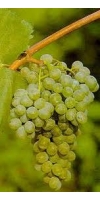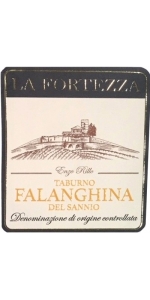Falanghina

Falanghina- Originally harvested in Greece, Falanghina is a white grape varietal with roots firmly grounded in the Ancient Italian culture. Falanghina is the grape behind the ancient Roman wine, Falerian, a gift from the god Bacchus. Falanghina has been researched extensively because of this and a movement to reestablish the high status of the grape is in progress. Falanghina is mainly grown in the Southern Italian region of Campania. There are a few other areas in Italy such as Puglia and Abruzzo but has not been produced internationally. There is, however, the possibility as the grape as becomes progressively popular. Falanghina flourishes in the volcanic soil (porous, rich and high in minerals) surrounding Mt. Vesuvius and in the balmy Mediterranean temperatures. The berries of this varietal are yellow-skinned and covered with a layer of protective wax. The name derives from Latin term falangae, or the stakes supporting the grape vine. Falanghina is frequently used as a blender for other native Italian varietals. Falanghina can also be used to make a sweeter passito. The wine is becoming a trendier and more widely accepted grape, so other styles of winemaking are emerging. Falanghina presents aromas of pine, citrus blossom, and bitter orange. Falanghina displays classic apple, pear and possible spicy or mineral notes on the palate.
Fortezza Falanghina del Sannio Taburno is made from 100% Falanghina - 25 years old
No oak.
Straw yellow color with greenish reflections. Fresh and floral scents, citrus aromas, apple, pear and mineral notes. Round, smooth and juicy with high acidity, yet well balanced with rich flavors.
Southeastern exposure with an altitude of 300-450 meters above sea level.
Planting density: 3,500 vines per hectare on average.
Training system: espalier with Guyot pruning.
Manual harvest in small crates between the end of September and beginning of October.
Winemaking in white in stainless steel tanks at controlled temperature.
Pairs well with seafood, mozzarella cheese, risotto, white meats.
- back
Selected Options
Grape Types
Categories
Pricing
Countries
Regions
Grape Types
Wineries
Organic/Free Shipping
The Grade Napa Cabernet Sauvignon Winfield Vineyard is made from Napa Valley Cabernet Sauvignon.
“This wine expresses a focused balancing act of dark, rich black fruit, and a fine tannin structure, illuminated through the core with a laser-like acidity. The wine displays a deep purple-red hue with a cranberry halo. Aromas of cassis, cinnamon, citrus oil, roasted meat, and lilac swell from the glass.
“The palate is marked by a wave of jet-black brambly fruit up front, followed by an exotic spice mid-palate and a long, complex finish that lasts and lasts expressing notes of flowering jasmine, and oolong tea. The silky tannins hold everything together and will certainly allow this wine to evolve in the cellar for at least 7-10 years.” - Thomas River Brown
Review:
The 2019 Cabernet Sauvignon Winfield Vineyard is a blend taken from three blocks in the vineyard. A potent, layered Cabernet, the Winfield is super-expressive today. Dark red cherry, licorice, incense and savory herbs all flesh out in a potent, resonant Calistoga Cabernet that hits all the right notes. This is impressive, to say the least.
-- Antonio Galloni 95 Points
Ancien Pinot Noir is 100% Pinot Noir.
The Mink Vineyard is located next door to the winery, in the Coombsville Viticultural Area of Napa Valley. Open to the same morning fogs and afternoon breezes that cool Carneros to the west, Coombsville is consistently one of the coolest pockets in Napa. Mink sits inside a small “bowl”, allowing cooler air to settle during the evenings, and making Mink’s mesoclimate a couple degrees cooler, even, than the surrounding hills. But the real secret to Mink’s explosive flavors, smooth, mouth-coating minerality, comes from the soil. Underneath is a layer of compressed volcanic ash, called tufa. The tufa drains the topsoil, storing moisture in its porous structure. The vines are able, with some work, to grow roots into the tufa layer, accessing moisture during the long, dry growing season.
The Mink Pinot Noir exhibits bright and refreshing notes of pomegranate, cherry, and fresh herbs. It gradually opens to deeper and darker berry fruit, blueberry and plum. This vintage is on the more structured side of the spectrum and will continue to evolve over time. Its enchanting mouthwatering minerality invite sip after sip together with bite after bite. A lively wine at release but it will continue to improve over the next 4 - 7 years and can age well beyond a decade as shown by its 20+ year track record.
Review:
"Ripe in flavor and luxurious in texture, this wine is difficult to put down. It is saturated in black cherry, black currant and black fig while staying light on the palate. It's a wonderful indulgence to enjoy by itself or with a roast pheasant or duck breast. — Jim GORDON"
- Wine Enthusiast (April 1st 2024), 95 pts





